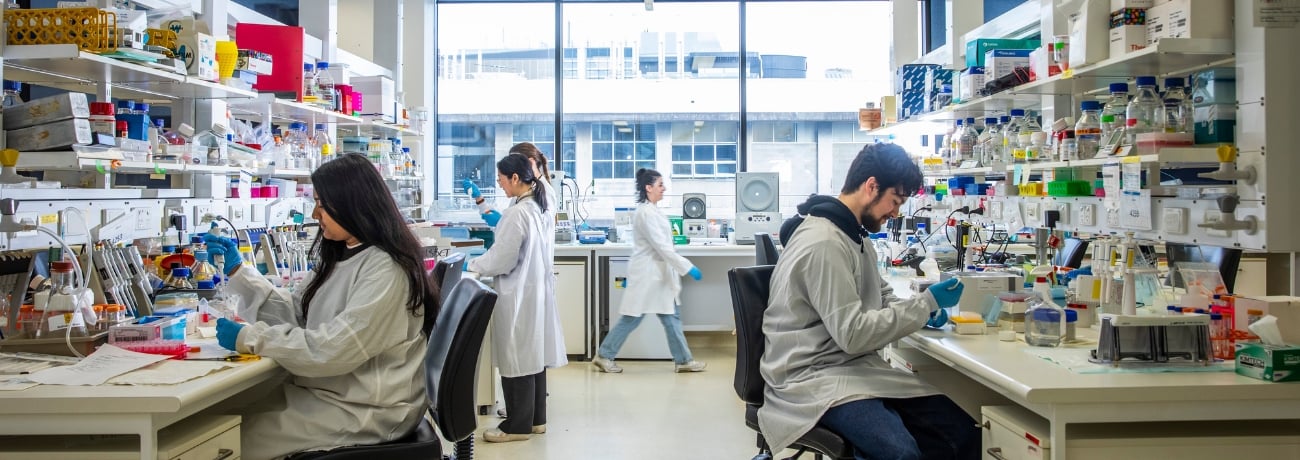Neuropix
Illuminating the wonders of the brain
Research at The Florey is geared at unravelling the complexities of neural circuits, studying neurodevelopmental processes, investigating disease mechanisms, and exploring potential therapeutic strategies for neurological disorders.
Microscopy techniques play a critical role in advancing our understanding of the brain’s structure and function. The Neuropix Imaging competition highlights these research efforts through a microscopic lens.
We hope to inspire the next generation of researchers through the power of imaging.
2025 winners
A Mind is Born
Scientific Award – James Spyrou, Neurophysiology of Excitable Networks Group
This image shows an interneuron (labelled in pink) in the cortex of the brain. All other brain cells are labelled in green.
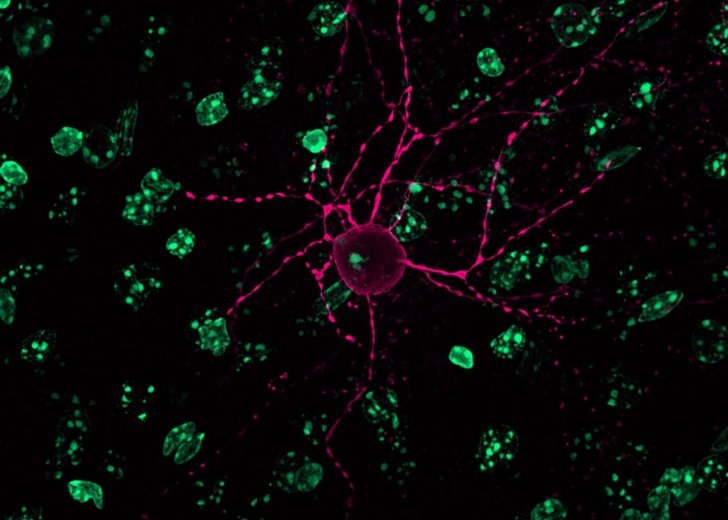
They Are Coming
People’s Choice Award – Andrew Quattrocchi, Stem Cells and Neural Repair Group
When the brain is damaged or under stress the support cells of the brain react. Here we see the chronic reaction of those support cells after a stroke.
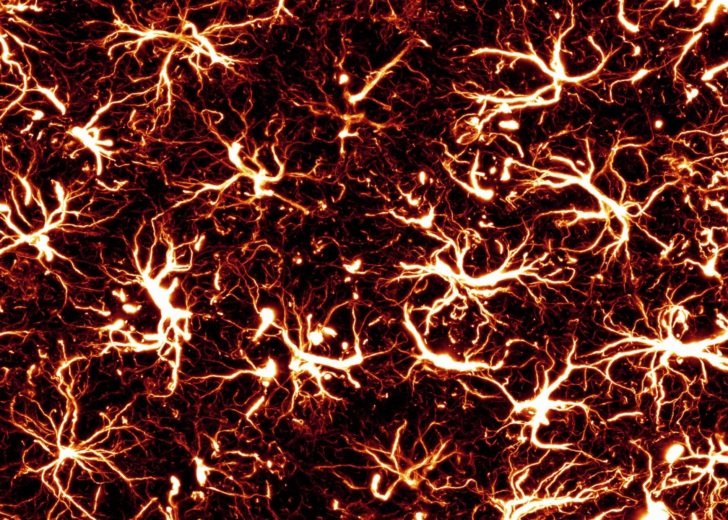
2025 entrants
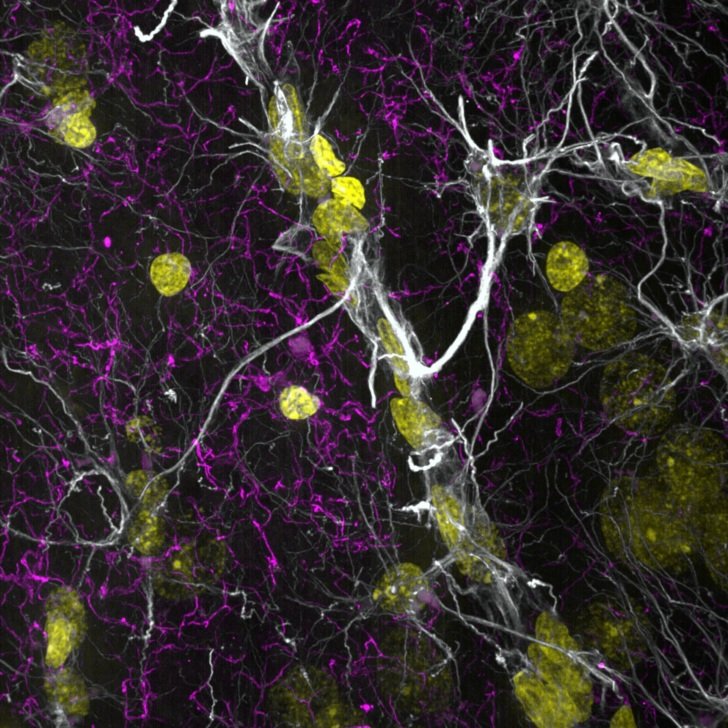
Astro Dancer
Angela Connelly, Research Assistant
This sheep forebrain image shows astrocytes in white, microglia in cyan and nuclei in yellow at 100x magnification.
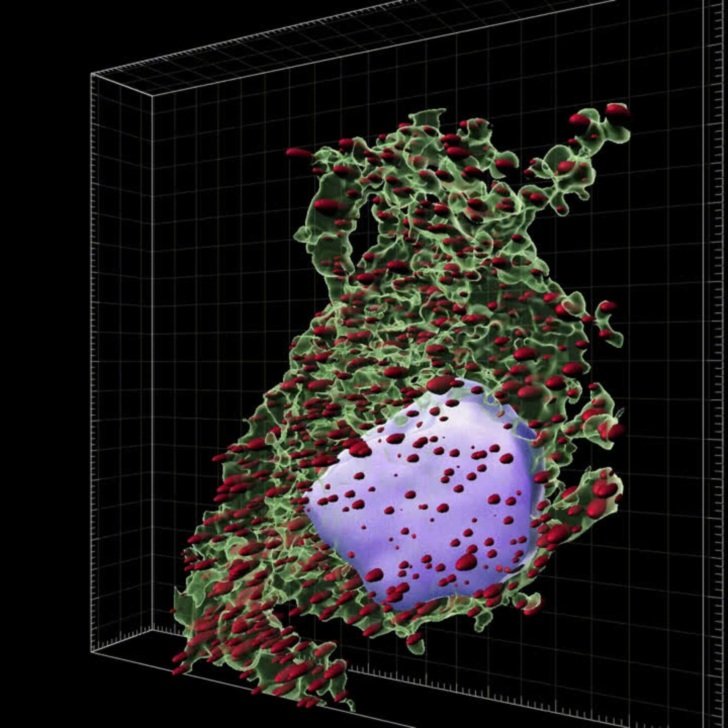
Cell-fie
Chau Tran, PhD student
This animation shows a single human neuron that survived 9 months in a mouse brain. Despite surviving, the cell developed signs of motor neurone disease, shown as abundant puncta inside it.
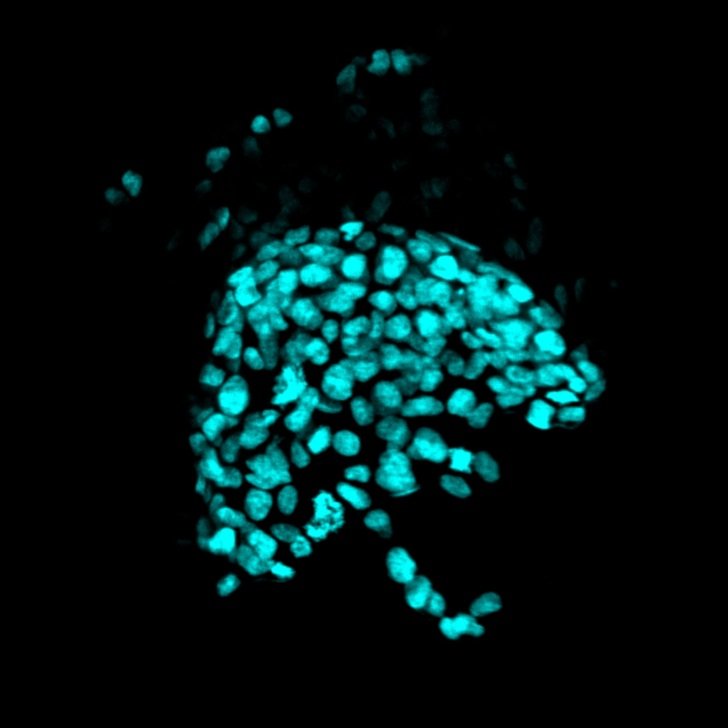
Dementia Umbrella
Patricia Wongsodirdjo, PhD student
This image shows human brain cancer cells which are used in our research to test cures for dementia. The cells are labelled in bright blue.
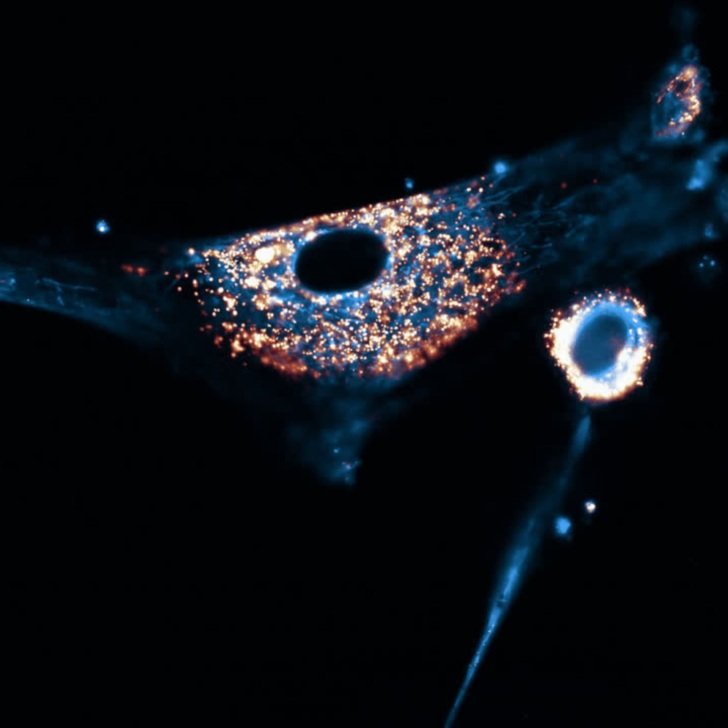
Electric Night
Andrew Quattrocchi, PhD student
Cells have dynamic tiny machinery inside of them that allow them to function. Here we can see the mitochondria and lysosomes, the energy and recycling centers of a cell.
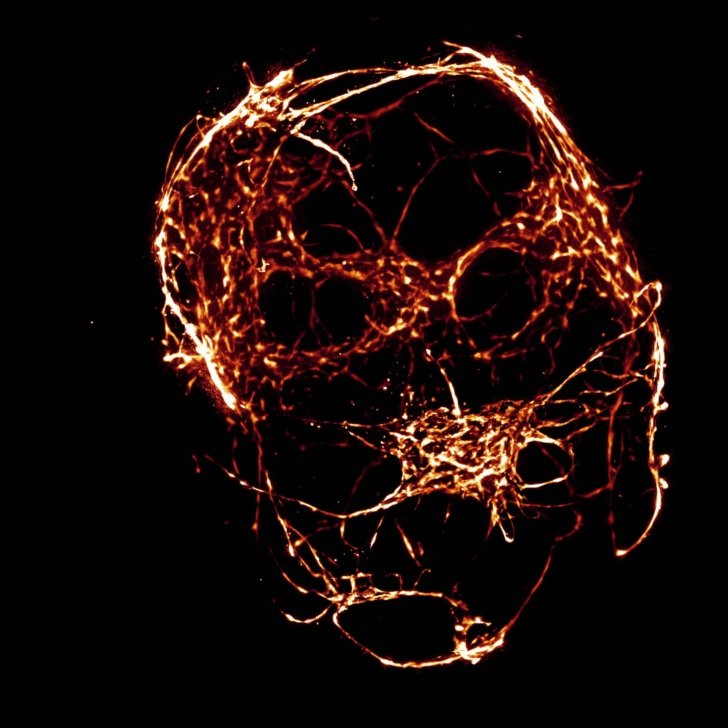
Hidden in Shadow
Andrew Quattrocchi, PhD student
This image shows functional vessels inside a mini brain in the dish. Our ability to model the human brain is now becoming more advanced with next generation stem cell technology.
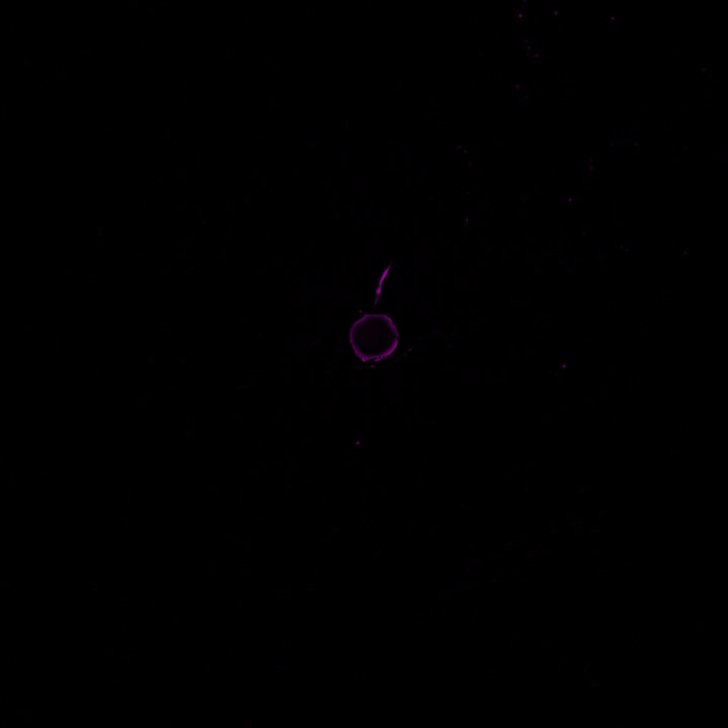
Information Superhighway
James Spyrou, PhD student
This animation shows an interneuron’s 3D structure (labelled in pink), moving up and down, illustrating what it might look like for signals to move to and from its centre.
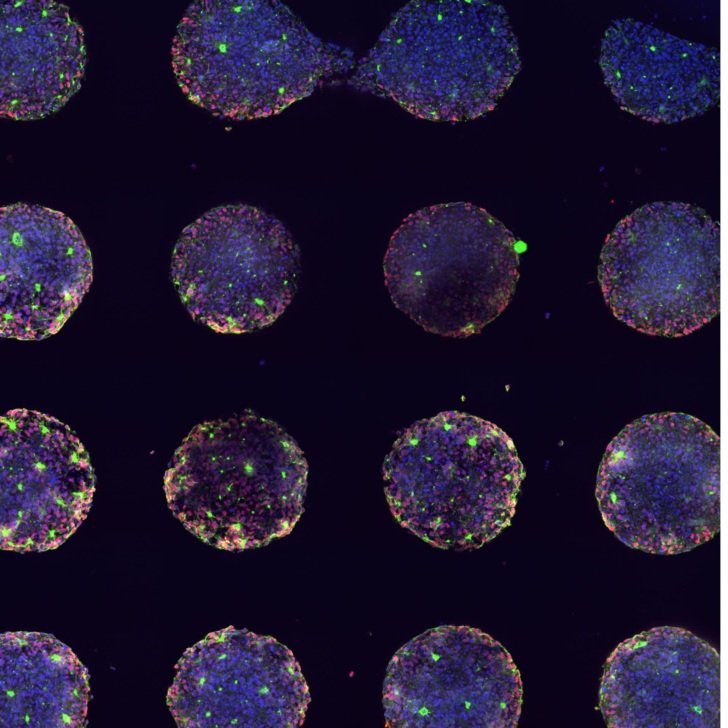
Microworlds
Montanna Waters, PhD student
This image shows stem cells that have become neural progenitor cells. The cells are grown in micro-wells, creating a uniform layout that makes them appear like planets floating in space.
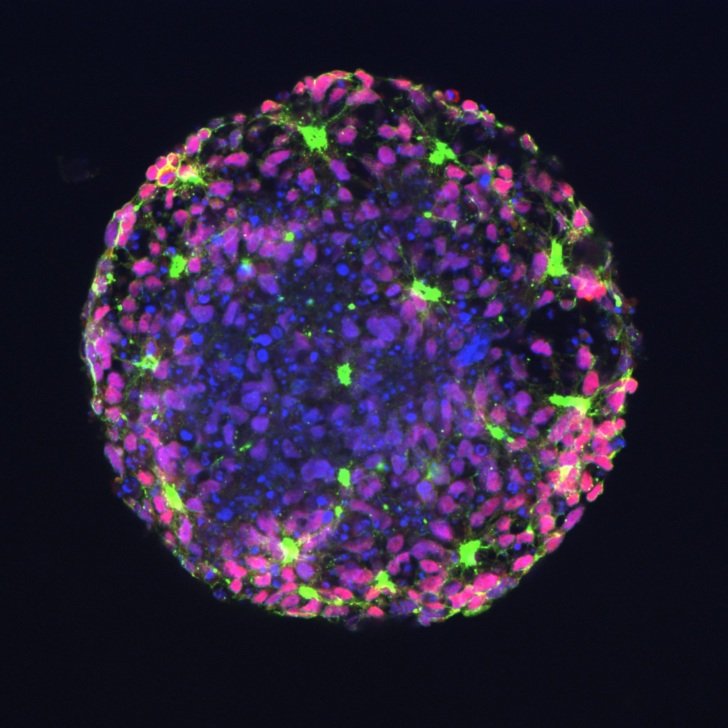
Polka-dotted Polarity
Montanna Waters, PhD student
This image shows stem cells that have become neural progenitor cells. The green staining highlights N-cadherin, a protein that helps cells stick together, the red staining indicates which cells are early brain cells, while the blue staining marks the nuclei of the cells.
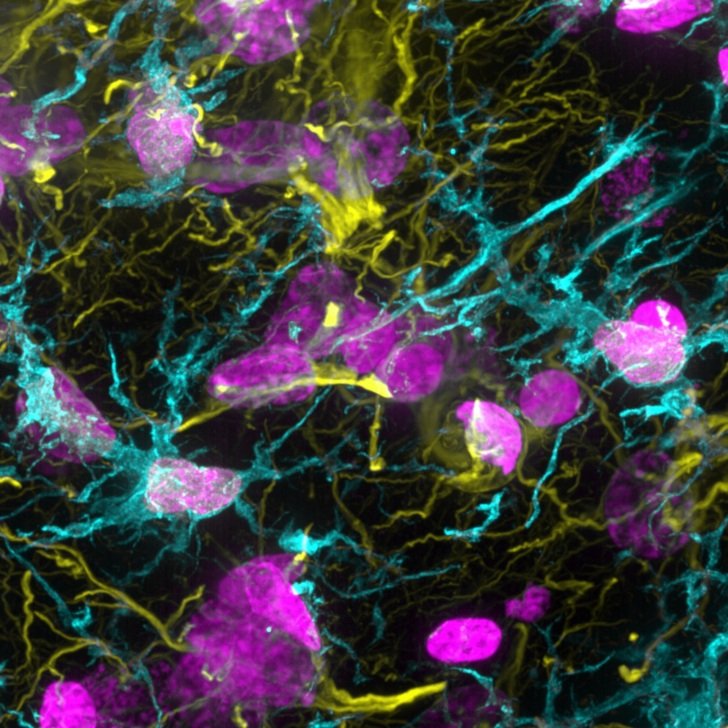
Spikeoglia
Angela Connelly, Research Assistant
This sheep forebrain image shows astrocytes in yellow, microglia in cyan and nuclei in magenta at 100x magnification.
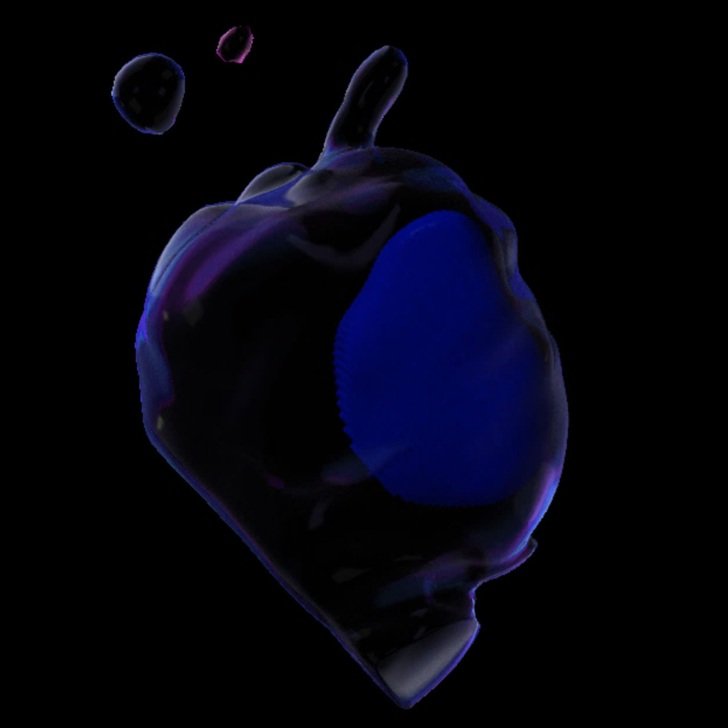
The Forbidden Cell
Chau Tran, PhD student
A 3D animation shows a human lower motor neuron. Human nuclei is labelled in blue.
2024 winners
Neural Love
Scientific Award – Montanna Waters, Epilepsy Functional Genomics Group
Captured on the Nikon-Crest spinning disk confocal, this image visualises stem cells that have become neural progenitor cells. This includes early brain cells (red), cell nuclei (blue), and N-cadherin, a protein that helps cells stick together (green).
In the image, the cells have arranged around the central space in such a way where the green appears to be in the shape of a heart.
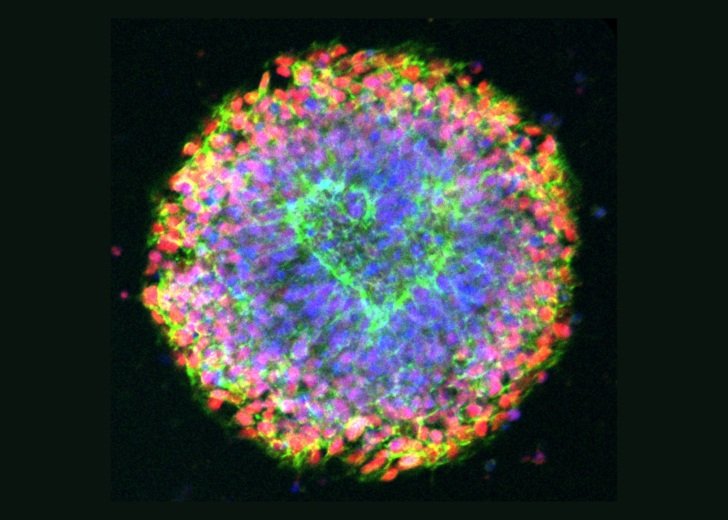
Cosmic Mitoneurons
People’s Choice Award – Chiara Parvan, Stem Cells and Neuronal Development Group
Captured on the Leica Thunder microscope, this image depicts dopaminergic neurons (neurons that undergo neurodegeneration in Parkinson’s disease) highlighted in white, mitochondria organelles within neurons in green, and pathological mitochondria in magenta.
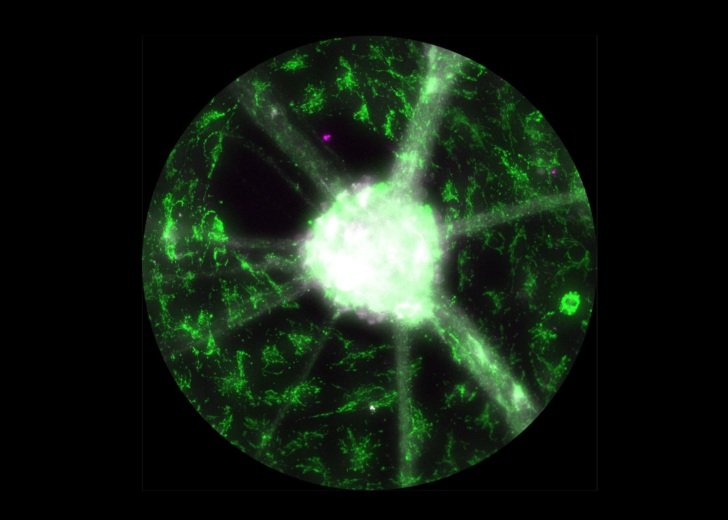
2024 entrants
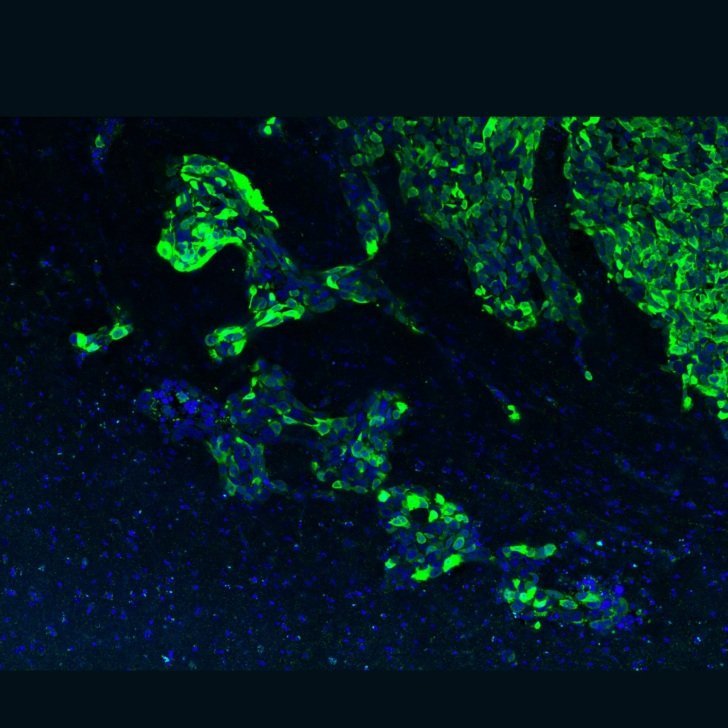
Island
Xiaoyu Wang, PhD student
Glioma cell (labelled in green) infiltrated brain. The ‘islands’ are seen on the edge of the glioma tumour mass. Brain cells are labelled in blue.
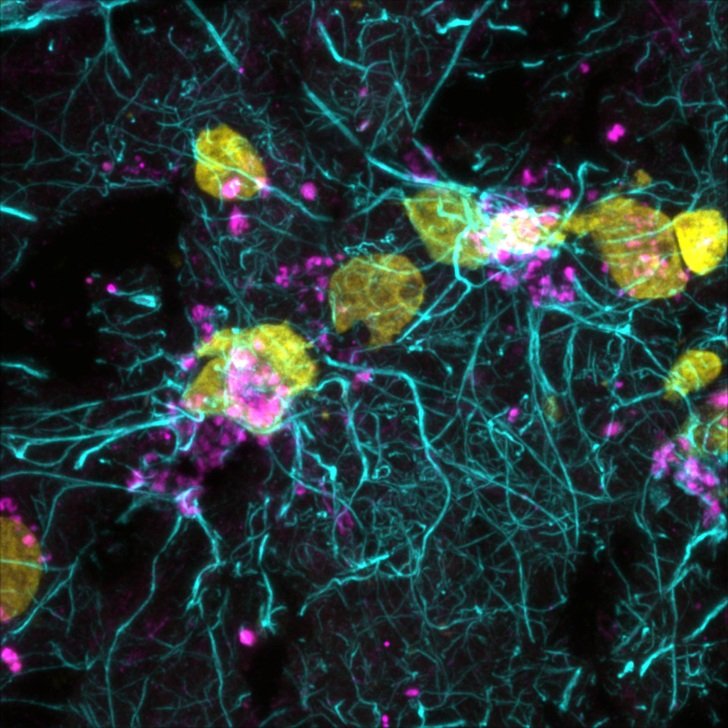
Neural Rhapsody
Chau Tran, PhD student
This image shows astrocyte (turquoise). Lipofuscin, pigment granules composed of lipid-containing residues, are labelled in pink. Cell nuclei are marked in yellow.
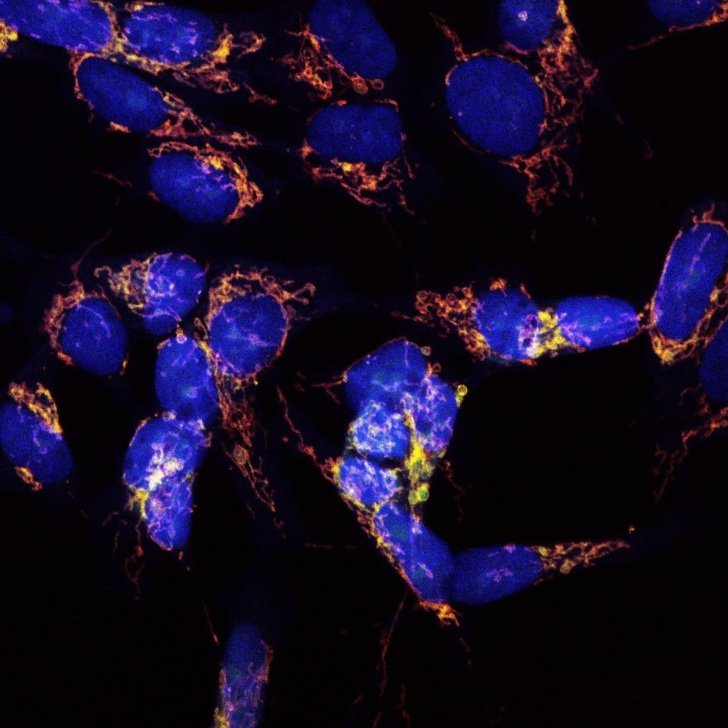
Powerhouse on Fire
Raoul Das, PhD student
Mitochondria (in red) of neurons and the immune protein Gasdermin-E (in green).
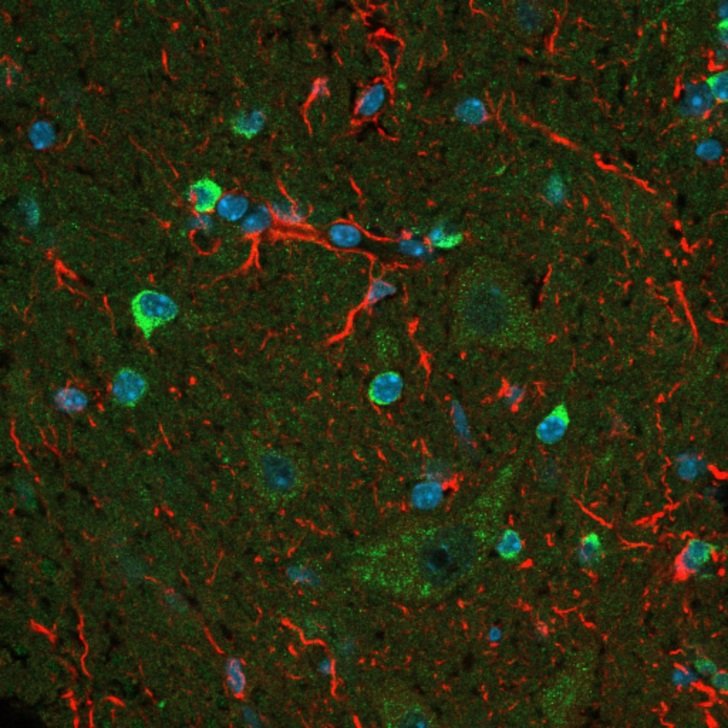
Reduce Reuse Recycle
Dushana Alagiyawanna, MPhil student
Autophagy (labelled in green by the key autophagy gene, Atg7), astrocytes (labelled in red by GFAP). Nuclei are labelled in blue.
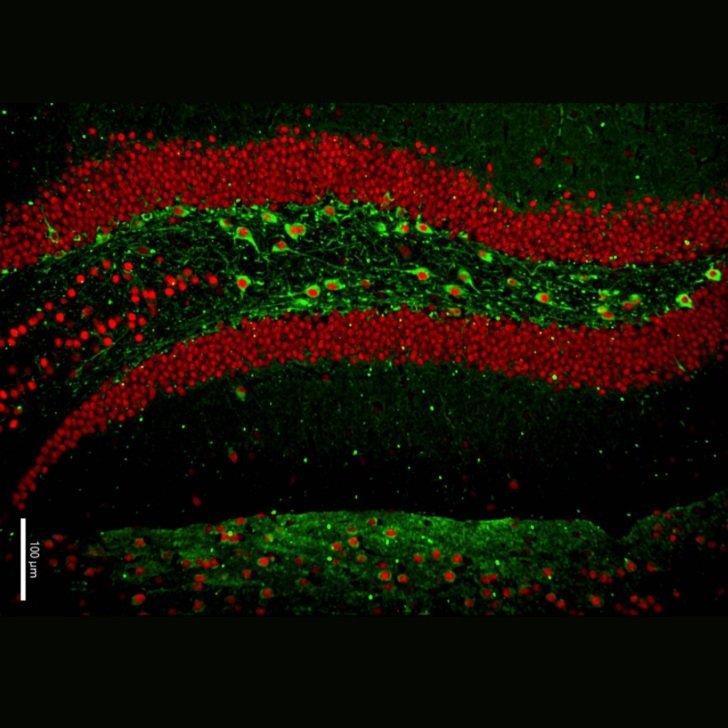
River of the Life
Samaneh Mirzaei (PhD), Research Fellow
TDP-43 proteinopathy (in red) in hippocampus and neurons in green.
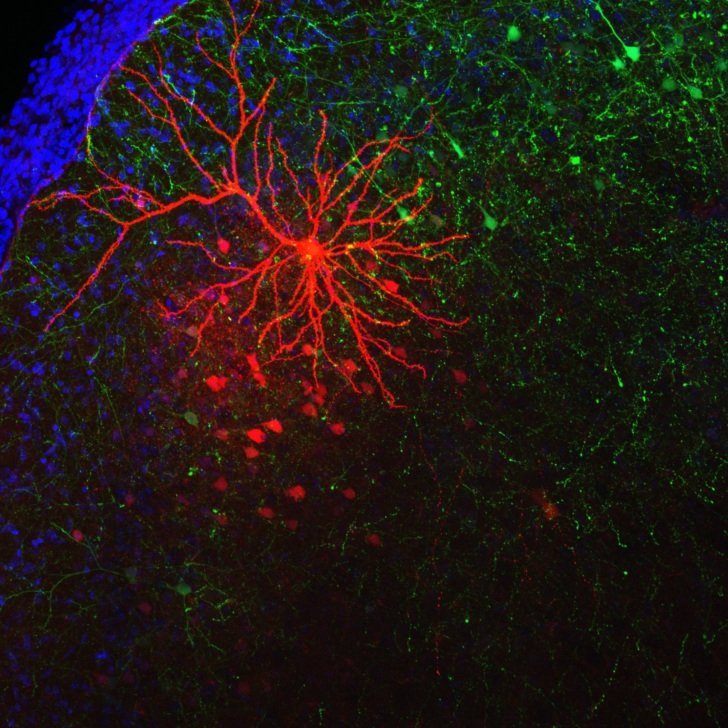
Tangled up in Red
James Spyrou, PhD student
Genetically engineered neurons (labelled in green), with the entire branches and structure of a specific neuron (labelled in red). Brain cells are labelled blue.
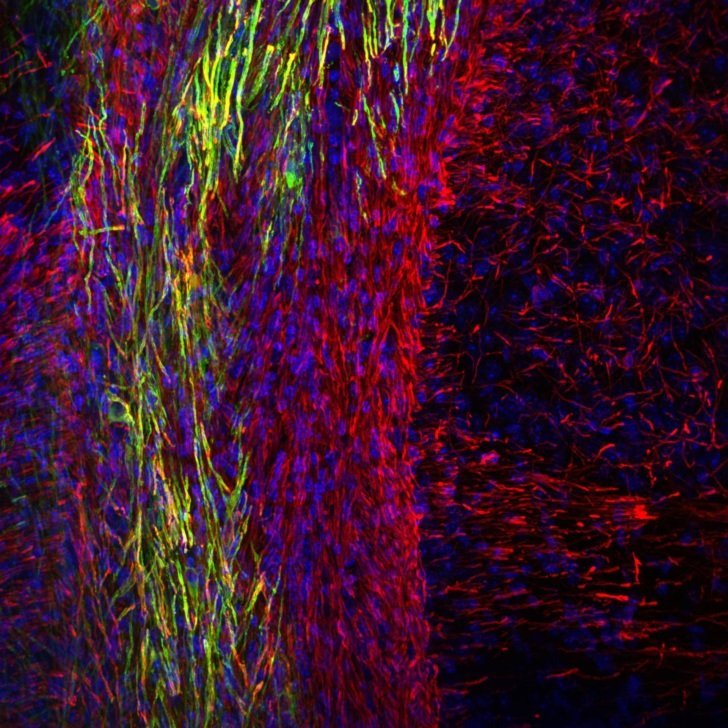
That's a Wrap!
Francois Beau, PhD student
Transplanted human myelin (green) wrapping around genetically modified brain axons.
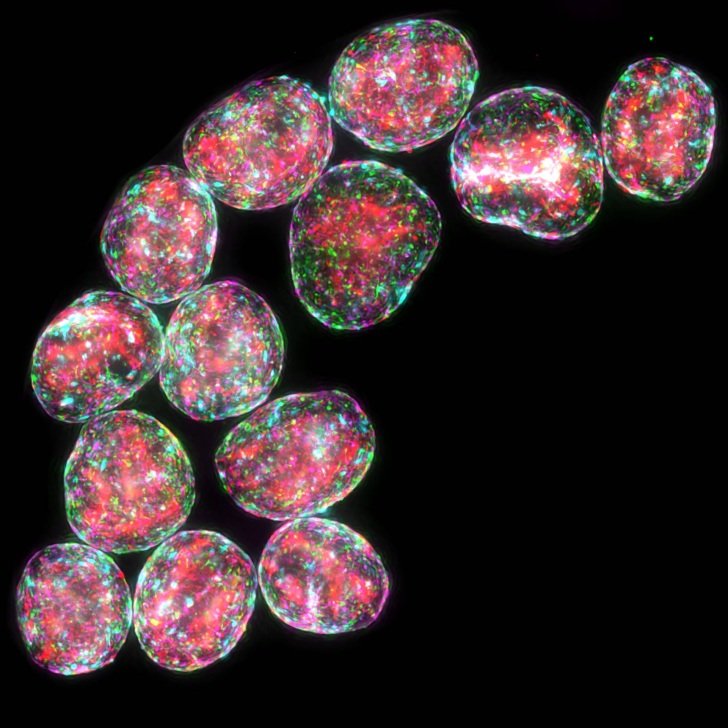
The Birth of the Brain
Andrew Quattrocchi, PhD student
Formation of brain-like systems 24 hours after formation from stem cells. The different colours show the different populations of cell types necessary for life.
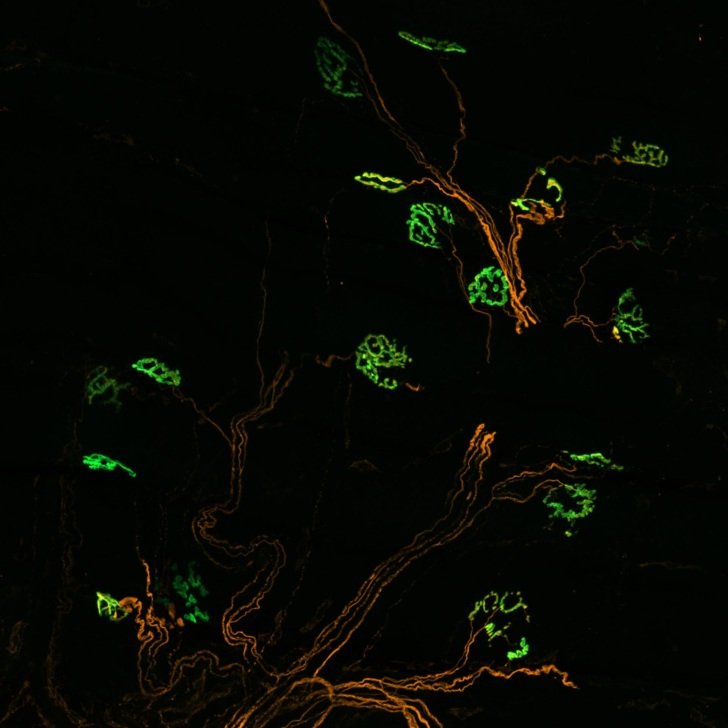
Tree of life – How Neurons Connect Us All
Aida Viden, PhD student
The bridge between nerve cells (orange) and muscle (green), the integral connections that enable us to move our muscles and bodies.
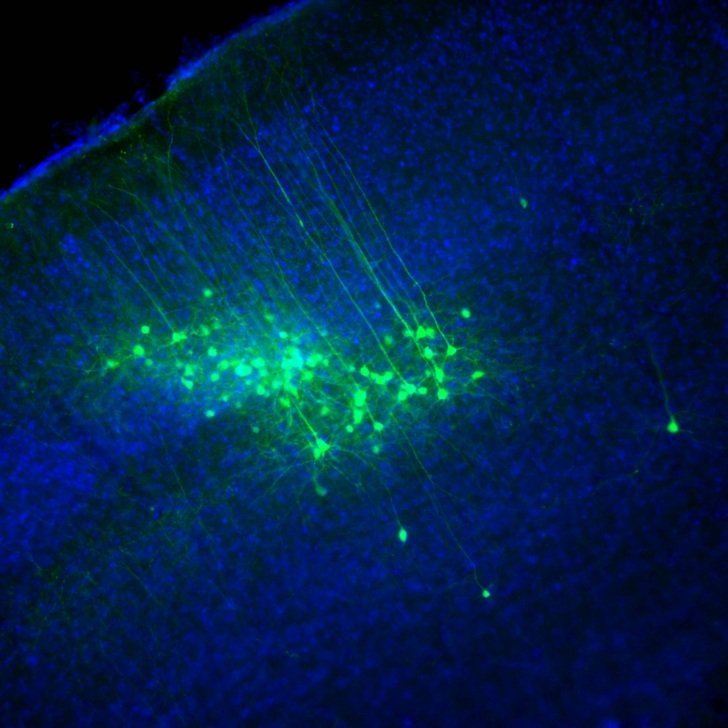
Why Aren't We Studying Morphology Instead
Lena Kricalussy-Hrabár, PhD student
Pyramidal neurons in the cortex labelled with green fluorescent protein. These cells are one of the main cell types in our brain. All cell bodies are labelled in blue to provide a background reference.
2023 winners
Sparkling Pink Heart
Scientific Award – Shivani Vaidya, Addiction Neuroscience Group
Captured on an LSM 900 confocal microscope, this combined image depicts two different hemispheres of the medial habenula.
The cell nucleus (pink) is surrounded by VGLUT1 mRNA (white).
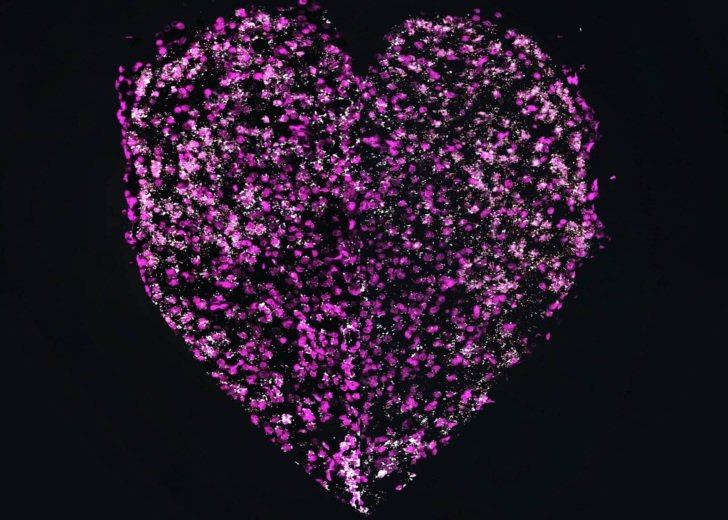
Wysteria Joy
People’s Choice Award – Chau Tran, Personalised Therapeutics Group
Using a Zeiss LSM 900 microscope, this image shows surviving motor neurons from patients with motor neurone disease in mouse brains after 6 months.
Lower motor neurons are labelled with CHAT (green) and purple 8-OHG, biomarker of oxidative stress.
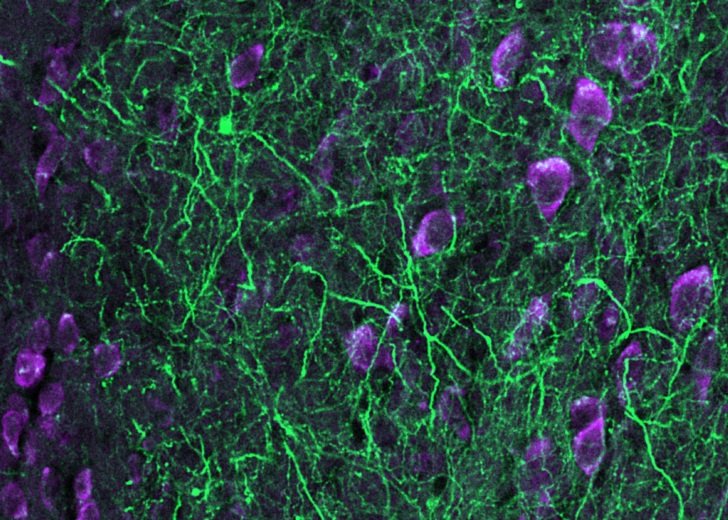
2023 entrants
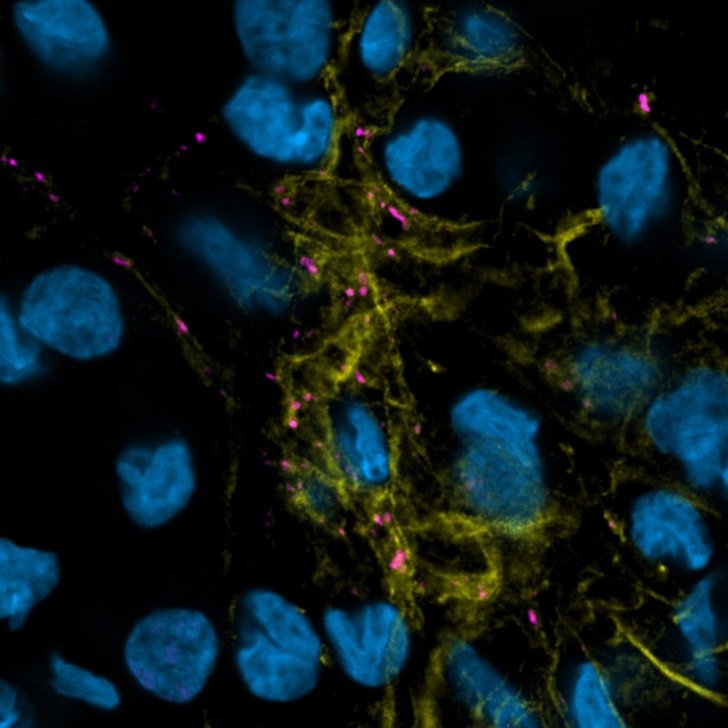
Synaptic transmission in brain organoids
Pamela Kairath (PhD), Research Fellow
Brain organoids neurons, VGlut1, vglumate transporter 1 in pink, nuclei in blue and tubulin β3 in yellow.
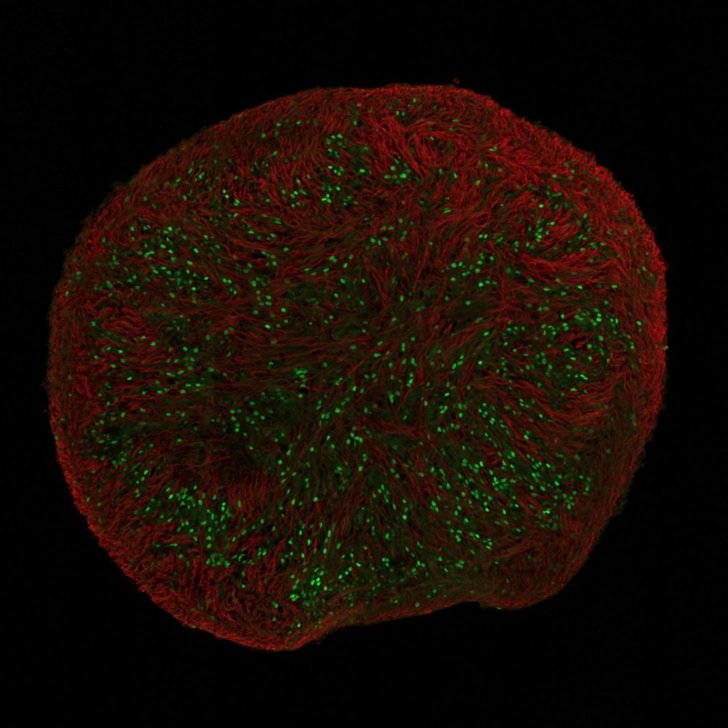
Overview of a spinal cord organoid
Lijun Loh, PhD student
Motor neurons in green and neurofilaments in red.
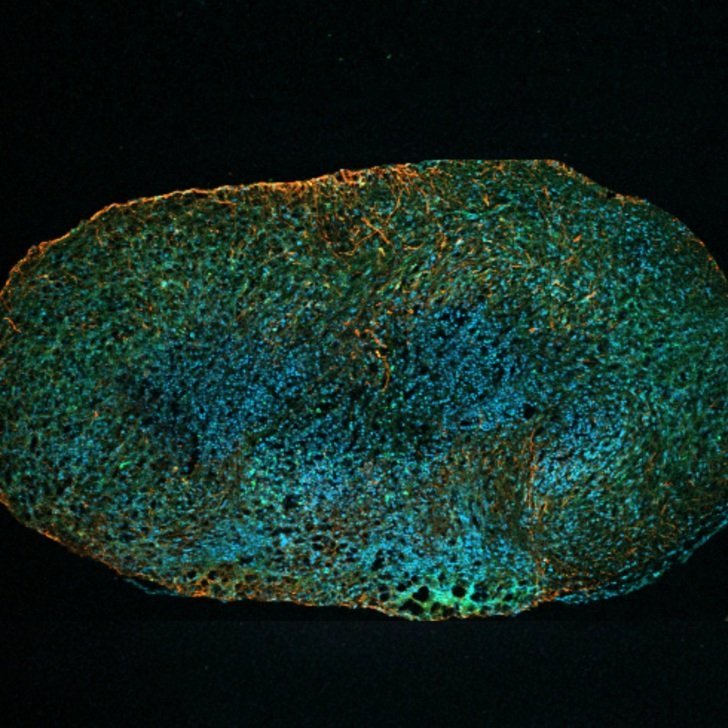
A neuromuscular organoid
Nirma Perera (PhD), Senior Research Officer
MND patient stem cell-derived organoid shows red nerve cells, blue nuclei and green autophagy protein.
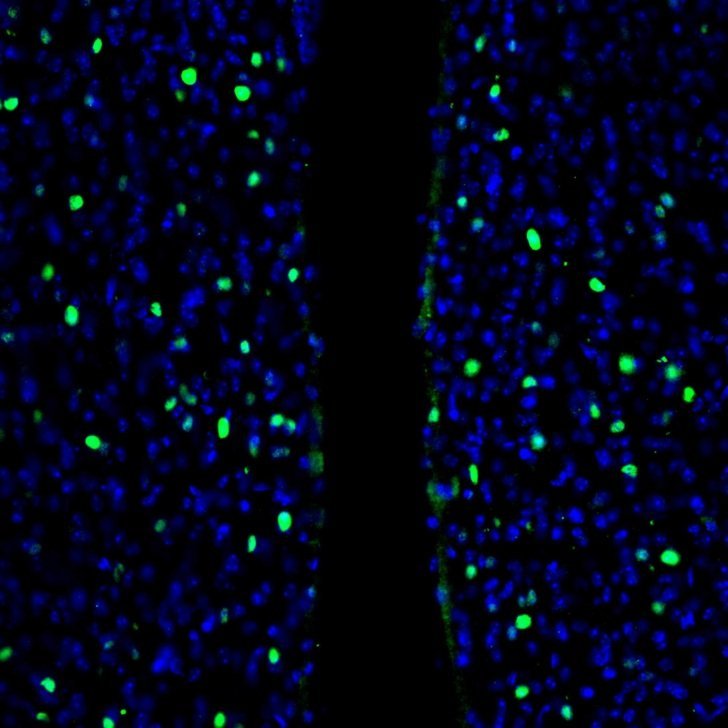
Bright cells meeting at the river of the ventricle
Alexandra Fraser, MPhil student
Stress marker c-fos in green and nuclei (blue) in a brain exposed to Porsolt test.
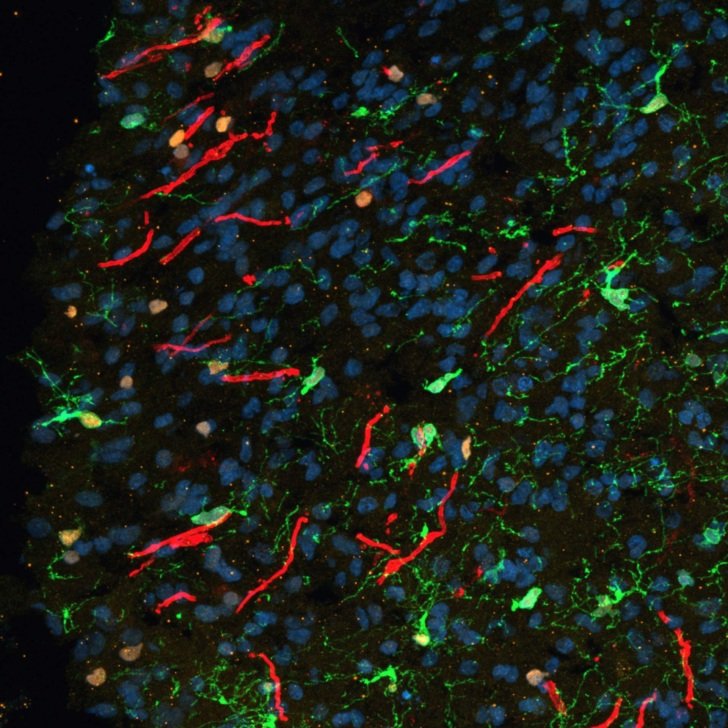
Jackson Pollock (reborn)
Francois-Xavier Beau, PhD student
Human lab-grown ‘mini-brain’. Oligodendrocytes (immature in green and mature in orange) can be seen doing their own thing (myelin in red), nuclei in blue.
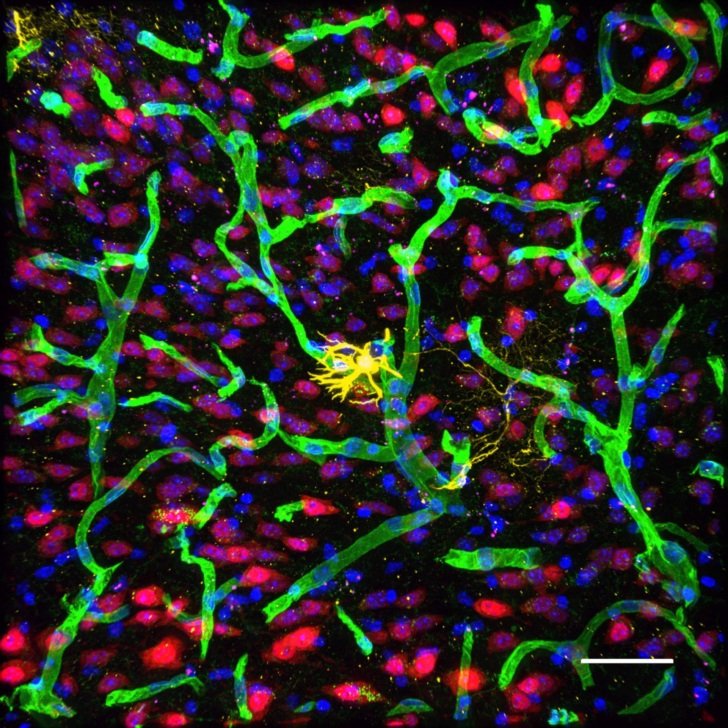
Breaking Barriers: Novel peptide-linked drugs penetrate the blood-brain barrier
Azin Amin (PhD), Research Fellow
The successful journey of drugs conjugated to a novel peptide (magenta) as they traverse the blood-brain barrier, escaping blood vessels (green) to reach the neurons (red) within the brain. Astrocytes in yellow and nuclei blue.
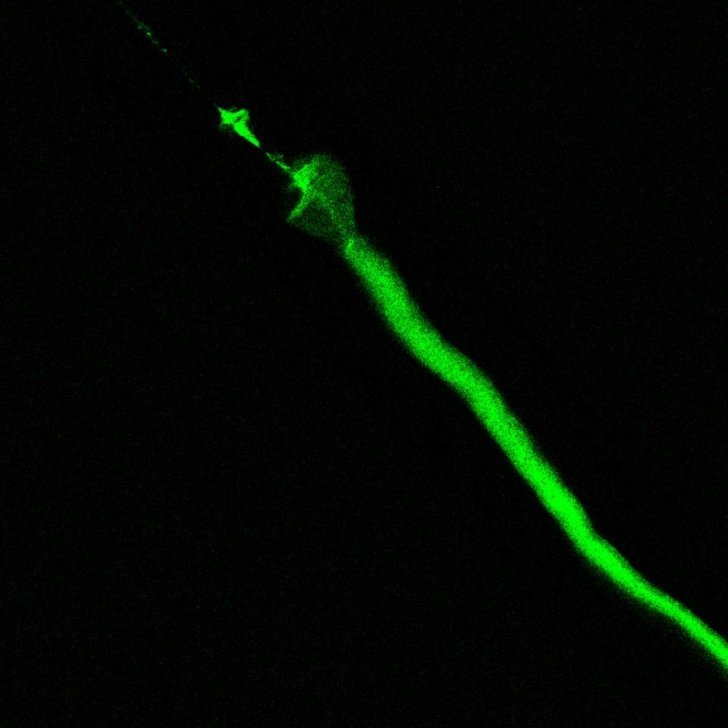
Microscopic biological sword
Hannah Truong (PhD), Postdoctoral Research Officer
Live adult C.elegans worms fed with GFP tagged Ferritin (FTN-2:GFP) and mounted onto glass slide. Head and body image was captured by SP8 confocal microscope equipped with 20x optical lens.
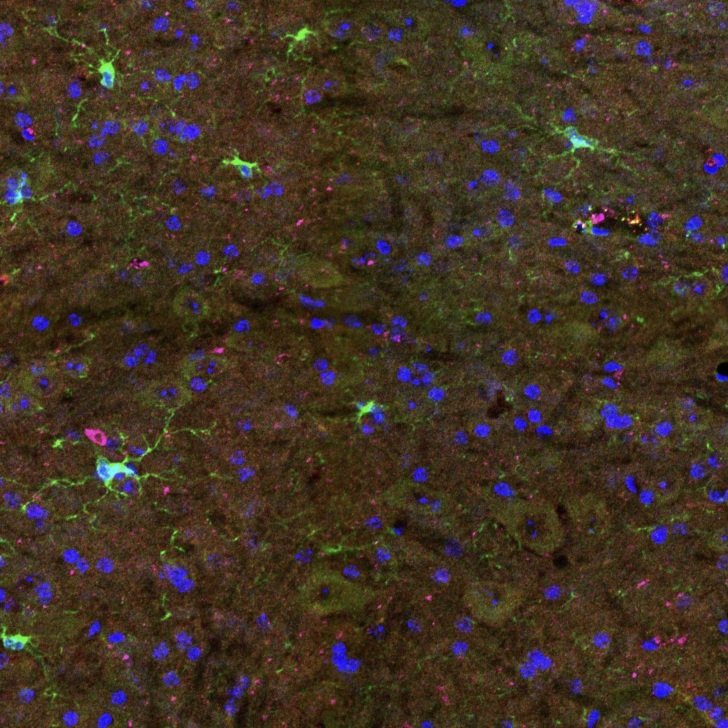
OH MY oliGODendrocyte!
Katherine (Katie) Lewis, PhD student
Oligodendroglia are the myelinating cells and are essential for maintaining brain health. Nuclei (blue), PDGFR⍺ (green; stains for oligodendrocyte precursor cells), EdU (magenta; marks cell proliferation).
Our microscopy services
The Florey Microscopy Facility supports in-house scientists and visitors in using advanced light microscopy methods for their research.
The facility houses a collection of state-of-the-art microscopy equipment and image processing tools. The experienced microscopy team are also available to assist users throughout the entire process of microscopic imaging.
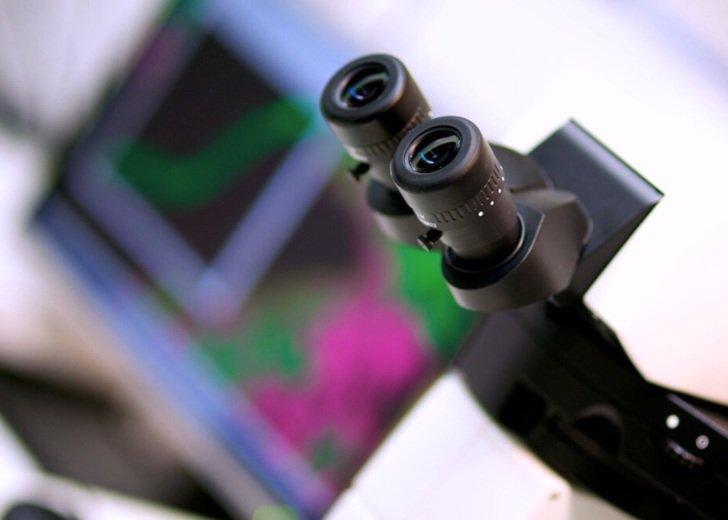
All images as part of the Neuropix Imaging Competition are copyright of The Florey and cannot be reproduced without permission.
